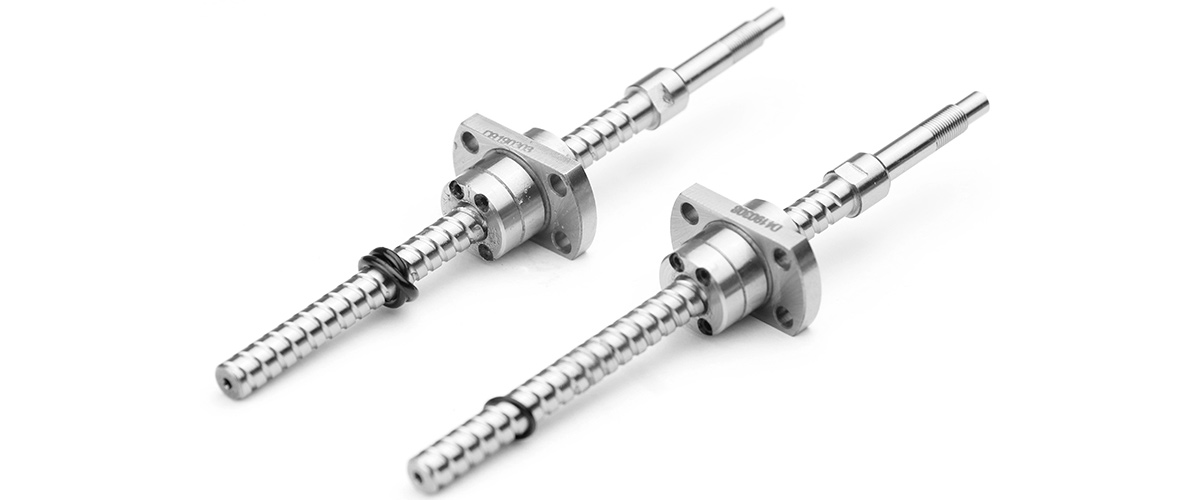In modern industry and precision equipment, ball screws are key components for achieving high-precision linear motion. They must possess excellent mechanical properties, such as high strength, low friction, and high wear resistance, and they also require good corrosion resistance to adapt to harsh environments like humidity and chemical corrosion. Therefore, selecting appropriate corrosion-resistant materials is crucial for ensuring the performance and lifespan of linear ball screws.
?
I. Impacts of Corrosion Problems on Ball Screw
?
1) Reduction in precision: Corrosion can cause material loss of ballscrews, resulting in dimensional changes and affecting positioning accuracy and repeatability.
?
2) Shortening of lifespan: Corrosion will damage the surface integrity of ballscrew and accelerate wear, thus shortening its service life.
?
3) Increase in maintenance costs: Corrosion problems necessitate regular inspections and maintenance, increasing maintenance costs and downtime.
?
4) Impact on reliability: In harsh environments, corrosion may lead to unexpected failures of linear ball screws, affecting the reliability of the entire system.
?
II. Selection Criteria for Corrosion-Resistant Materials
?
1) Chemical stability: The materials should have excellent chemical corrosion resistance and be able to resist the erosion of chemical substances that may exist in specific environments.
?
2) High-temperature performance: In high-temperature environments, the materials should maintain stable physical and chemical properties and be less prone to oxidation or hot corrosion.
?
3) Mechanical properties: The materials should possess sufficient strength, hardness, and toughness to ensure that high-speed ball screws do not deform or break when subjected to loads.
?
4) Machinability: The materials should be easy to process, including cutting, grinding, and heat treatment, to manufacture precise ball screws.
?
5) Economy: On the premise of meeting technical requirements, the price of materials is also an important selection factor.
?
?
III. Commonly Used Corrosion-Resistant Materials and Their Characteristics
?
1) Stainless steel: Stainless steel is one of the most commonly used corrosion-resistant materials. Especially austenitic stainless steels, such as Type 304 and Type 316, have good corrosion resistance and high-temperature performance, but their strength is relatively low.
?
2) Nickel-based alloys: Nickel-based alloys, such as Inconel alloys, have excellent corrosion resistance and high-temperature strength, but they are relatively expensive and are suitable for extreme environments.
?
3) Titanium and titanium alloys: Titanium alloys have excellent corrosion resistance and relatively high strength, and they also have a low density, but they are difficult to process and costly.
?
4) Cemented carbides: Cemented carbides, such as tungsten carbide (WC), have extremely high hardness and wear resistance, but they are brittle and have poor impact resistance.
?
5) Ceramic materials: Ceramic materials, such as alumina and silicon nitride, have excellent corrosion resistance and high-temperature stability, but they are also brittle and have poor impact resistance.
?
IV. Application and Treatment of Corrosion-Resistant Materials
?
1) Surface treatment: For non-precious metal materials, their corrosion resistance can be improved through surface treatment techniques such as electroplating, spraying, carburizing, and nitriding.
?
2) Coating protection: Using anti-corrosion coatings, such as polytetrafluoroethylene (PTFE) coatings, can effectively isolate corrosive media and protect the base materials.
?
3) Composite materials: Adopting fiber-reinforced composite materials or metal matrix composite materials, combining the advantages of different materials, can improve the overall corrosion resistance.
?
4) Material combination: In some cases, different materials can be used in combination. For example, corrosion-resistant materials can be used in key parts, while materials with lower costs can be used in non-critical parts.
?
V. Summary and Outlook
Selecting appropriate corrosion-resistant materials is crucial for the performance and lifespan of ball screws and nuts in harsh enviroments. By comprehensively considering factors such as chemical stability, high-temperature performance, mechanical properties, machinability, and economy, the most suitable materials can be selected. Meanwhile, through surface treatment, coating protection, composite materials, and material combination techniques, the corrosion resistance of ball screw sets can be further improved. With the development of materials science and surface engineering technology, more high-performance corrosion-resistant materials and treatment techniques will be applied to the manufacturing of ball screw assemblies in the future to meet the increasingly stringent industrial application requirements. In practical applications, appropriate materials should be selected according to specific conditions, and regular inspections and maintenance should be carried out to ensure that ball screws can stably perform their excellent functions in the long term.



